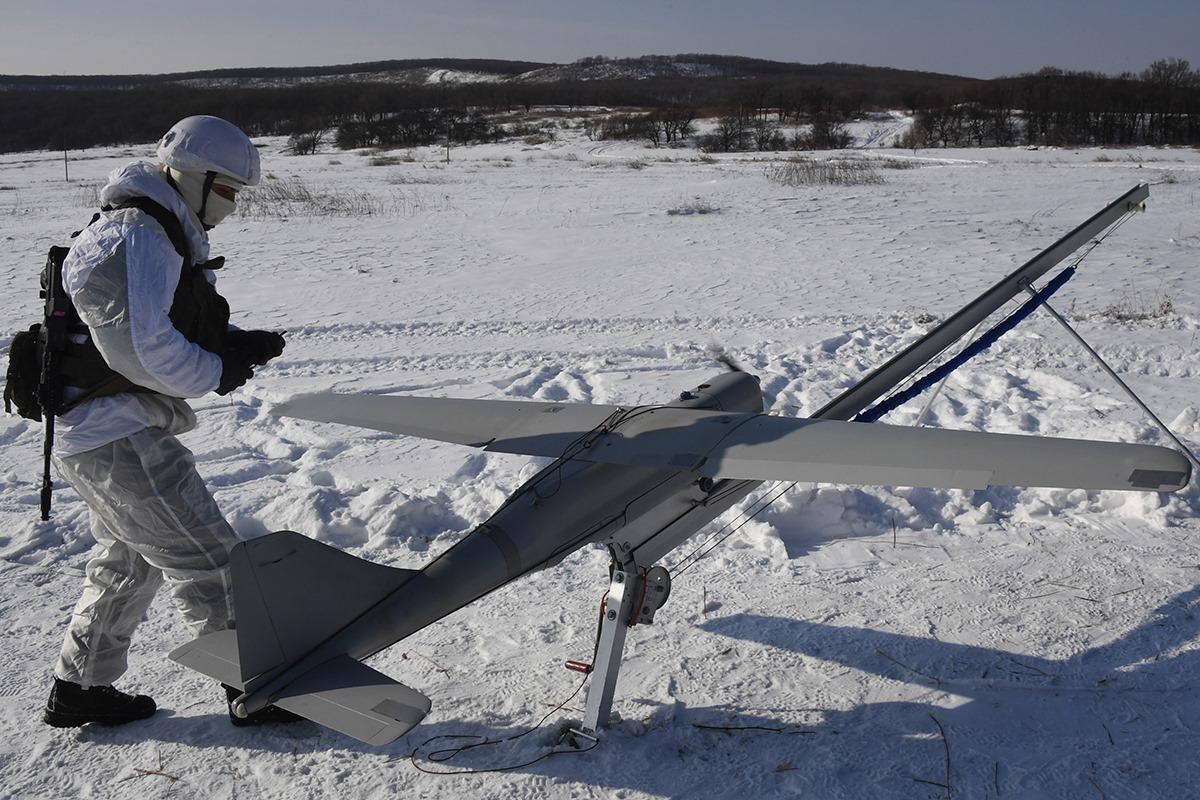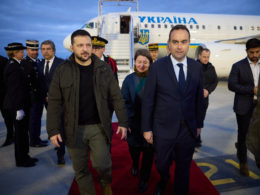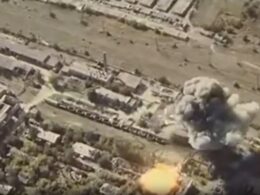Russian manufacturer “Special Technological Center” (STC), producer of the “Orlan-10” drones frequently used against Ukrainian Armed Forces, is increasing its production volumes despite sanctions and reliance on Western components, as revealed by documents leaked by Ukrainian hackers “Cyber Resistance” and analyzed by Ukrainian volunteer community Inform Napalm.
The escalation in production of Orlan-10 drones by Russia amidst sanctions highlights the challenges of international restrictions in curbing military advancements and underscores the strategic importance of these UAVs in modern warfare, particularly in the context of the ongoing Russian war against Ukraine.
The STC is reportedly heavily dependent on imported electronics for its “Orlan-10” model. Key components include propellers and engines made by Chinese company T-Motor, flight controllers and GPS modules from China’s Radiolink Electronic Limited, Lenovo laptops, and Sony cameras. Moreover, the enterprise imports devices, parts, and equipment from countries like the USA, Germany, Spain, Austria, the UK, and Switzerland.
The procurement documents analyzed indicate simplistic schemes for importing sanctioned components. Goods from the manufacturer are initially sent to a distributor in the same country, then purchased by intermediary companies in China, Serbia, UAE, or Türkiye. Subsequently, a Russian importing firm acquires these goods for the drone manufacturing plant, with transactions in dollars, euros, and yuan. Analysts also discovered that STC has steady Chinese partners supplying critical electronic components.
The cost of one “Orlan-10” drone is estimated between $87,000 and $120,000, as reported by the UK’s Royal United Services Institute for Defence and Security Studies.
A December 2022 investigation by Reuters, “Important Stories,” and the British Institute of Defence Studies found that the sanctioned STC continued to procure Western components through a network of intermediaries, purchasing $25.75 million worth of products from January to October 2022.
Ukraine’s Main Intelligence Directorate reported acquiring 100 gigabytes of secret data from the Russian STC enterprise.
Ukraine’s military intelligence seizes classified data from Russian drone manufacturer
In January 2023, Lieutenant General Oleksandr Pavlyuk, Deputy Commander of the Ground Forces, stated that Russia began using the “Orlan-10” drone to drop fragmentation grenades. In June, two “Orlan-10” drones belonging to the Russian Ministry of Defense reportedly crashed in the Voronezh region of Russia, as reported by Russian media with published photos.
The Orlan-10, a reconnaissance UAV developed by Russia’s Special Technology Center, has played a significant role in various wars, including the 2022 Russian invasion of Ukraine. The Orlan-10, featuring a composite fuselage to reduce radar detection, is typically deployed in groups for varied functions like reconnaissance, electronic warfare, and data relay. In 2020, the more advanced Orlan-30 was introduced, enhancing effectiveness with precision weaponry.
The operational impact of the Orlan-10 has been significant, as evidenced by Colonel Yurii Solovey’s December 2022 statement of Ukrainian forces destroying over 580 units, affecting Russian capabilities in artillery recon and counterbattery fire. Despite sanctions impacting their procurement, Russia reportedly increased Orlan-10 and -30 supplies by 53 times since early 2022, as stated by Russian Defense Minister Sergey Shoigu in July 2023. The drones’ importance in warfare is further highlighted by Andrii Biletskyi’s October 2023 comments on the challenges Ukrainian forces face in countering them, citing their use in artillery adjustment, reconnaissance, and their resistance to jamming.
Western companies supplied components for Russian Orlan drones despite sanctions – media
Production of the Orlan-10 has been robust, with over 1,000 units produced by 2018 and continued orders in 2022. Exported to Russian allies, the Orlan-10 has seen action in various global conflicts. However, reports in 2023 revealed that despite sanctions, the drones contained components from countries like Ireland and US- and Swiss-made microchips, highlighting the challenges of enforcing sanctions and the ingenuity in bypassing them. These components are crucial for navigation and targeting, demonstrating the technological sophistication and international dependency of modern military equipment.
Ukrainian air defenses destroy Russian ground attack aircraft Su-25 and UAV Orlan-10 – Air Force Command






